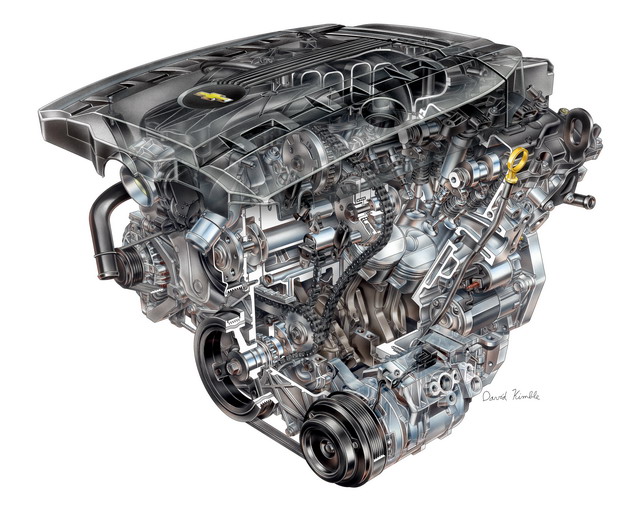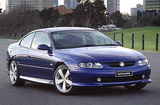Chevrolet Camaro Engine: More Power, Efficiency
A new, more powerful and more efficient version of the 3.6L direct-injected V-6 will be standard in the 2012 Chevrolet Camaro. It delivers an SAE-certified 323 horsepower (241 kW) at 6,800 rpm – 11 horsepower (8 kW) more than 2011 models. It is also 20.5 pounds (9.3 kg) lighter than the current engine, which enhances efficiency and driving dynamics.
The changes to the 3.6L V-6 – known by its new “LFX” engine code – represent greater refinements to an already well-balanced package, including the use of new, lighter-weight components and enhancements designed to improve performance, efficiency and durability. And while more powerful than the current 3.6L, the 2012 Camaro 2LS model will deliver an estimated 30 mpg on the highway with the LFX engine.

“This is a great engine architecture and our engineers have never stopped working to make it even better,” said Ameer Haider, assistant chief engineer for V-6 engines. “The enhancements for 2012 will deliver reduced engine weight and lower emissions – along with the greater power that Camaro drivers will certainly appreciate.”
The 3.6L is a 60-degree design, with the cylinder block and cylinder heads cast in aluminum for low weight. A forged steel crankshaft provides optimal strength in the bottom end, while the cylinder heads include four valves per cylinder, with a dual overhead camshaft design incorporating infinitely variable cam phasing. Compared to the 3.6L V-6 in 2011 models, the new LFX engine features:
- New cylinder head design with integrated exhaust manifold
- Improved intake port design and larger intake valves within the cylinder heads
- Longer-duration intake camshafts
- Composite intake manifold
- New fuel pump and isolated fuel rail
- New, optimized-flow fuel injectors
- Structural front cover and cylinder block enhancements
- Stronger and lighter-weight connecting rods
- Camshaft cap and throttle body design enhancements.
The LFX engine is significantly lighter than the current 3.6L V-6. The integrated cylinder head/exhaust manifold design saves approximately 13 pounds (6 kg) per engine over the cylinder heads and manifolds of the current engine, while the new composite intake manifold saves approximately 5.5 pounds (2.5 kg) over the current aluminum intake. Additionally, a lighter-weight structural front cover and lighter-weight, high-strength connecting rods bring the total weight savings to 20.5 pounds (9.3 kg), which helps the vehicle’s fuel efficiency and enhances its feeling of driving balance.
“It isn’t often we get the opportunity to take more than 20 pounds off an engine. We met some aggressive targets while retaining great strength and reliability,” said Haider. “The engine is as durable as ever but now with improved performance and efficiency.”
Additionally, the optimized-flow fuel injectors and integrated exhaust manifolds/cylinder heads promote lower emissions. And along with its weight savings, the composite intake manifold has a smaller radiated surface area to help it maintain noise and vibration characteristics comparable to the previous aluminum manifold.
Greater airflow brings more power – and efficiency
The new cylinder heads also bring a revised intake port design that enhances airflow to the combustion chambers. Larger-diameter intake valves (38.3 mm vs. 36.96 mm) are used in the heads and work in conjunction with new, longer-duration intake camshafts to provide the engine’s boost in horsepower.
The valves let air in and exhaust escape from the combustion chambers. The duration of the camshaft determines how long the valves are open. By using larger valves and holding them open longer, more of the air is pulled into the combustion chamber, for a more powerful combustion. Often, the tradeoff for greater power is greater fuel consumption, but the LFX engineers adapted new fuel injectors that are optimized for the engine’s performance parameters. The result is more power without sacrificing fuel economy. The more-efficient combustion also means reduced emissions.
Of course, the LFX engine retains direct fuel injection. It optimizes fuel delivery to the combustion chamber by introducing fuel closer to the combustion chamber. The result is better efficiency in the combustion process leading to increased fuel efficiency at part and full throttle.
The LFX uses a new fuel pump for the direct injection system, along with a new, isolated fuel rail. The new fuel pump is quieter, while the isolated fuel rail further reduces fuel system noise.
Greater refinement and durability
Additional changes incorporated in the LFX deliver greater refinement, quietness and durability, starting with revisions to the front cover. It was redesigned with additional support ribs on the backside and an additional fastener to reduce noise and vibration. The cylinder block is modified slightly to accommodate the front cover’s additional fastener.
Inside the engine, the powdered metal connecting rods use a higher ratio of copper, which makes them stronger and enables further mass savings. Also, the camshafts feature new saddle-type caps for improved durability. Finally, the throttle body is updated with a new, digital throttle position feature that eliminates a previous mechanical contact for more trouble-free operation.











